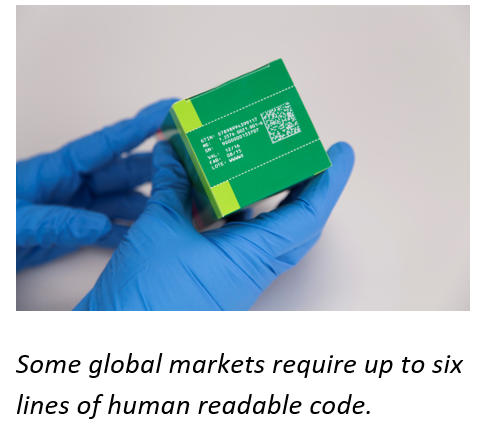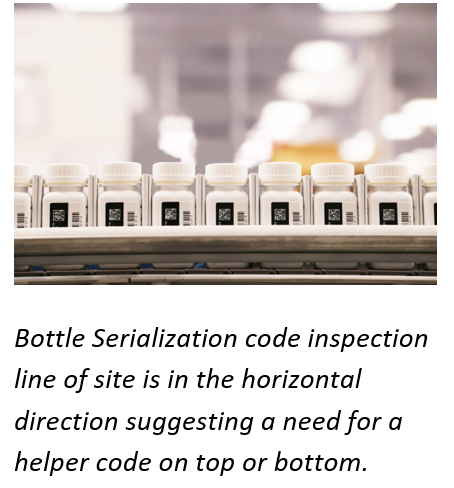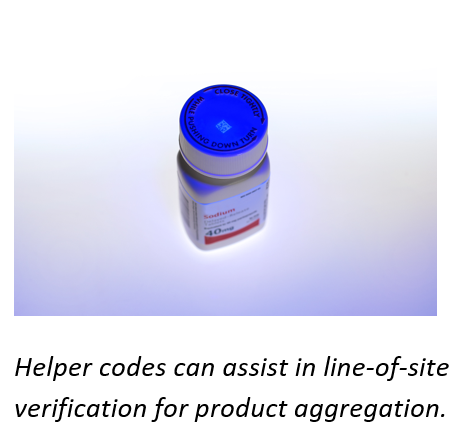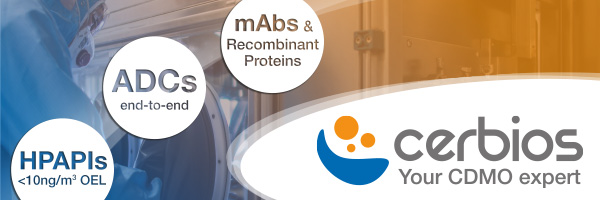Contract Services
Ensuring serialization effectiveness 3rd May 2018
By Justin Schroeder, Senior Executive Director, Global Marketing & Design at PCI Pharma Services
Justin Schroeder, Senior Executive Director, Global Marketing & Design at PCI Pharma Services, explains the process and benefi
Justin Schroeder, Senior Executive Director, Global Marketing & Design at PCI Pharma Services, explains the process and benefits of serialization compliance and considers its impact on operational efficiency.
The demands of serialization are upon the pharmaceutical industry to comply with individual country regulatory standards. Some of these standards have been firmly established in emerging market countries, and some being well established enough to have been in effect for as much as the last two years, such as South Korea or Turkey. Domestically, the standards in the United States implemented by virtue of the DCSCA are officially in place, and the FDA expects full compliance, although a grace period has been granted for one year with regards to enforcement of the law. This grace period has provided some breathing room for supply to the world’s largest market. Many other regulations have been in development and are coming into effect over the coming 12-24 months. European Union requirements called go into effect in February of next year.

While the regulatory agencies of many countries have implemented standards that loosely follow GS1 guidelines, there are certainly examples of countries that do not. China would be the best example, utilizing a government assigned Serial code and a linear barcode format for application. Even within the “standards” of the developed countries aligned to GS1, there is considerable opportunity for individual companies to customize their own approach to code structuring and data communication.
This creates considerable challenges for both pharmaceutical and biotech companies in managing the varying country requirements, and further exacerbated for CMOs who need to manage individual country requirements as well as custom approaches for each of their clients.
One of the other key inconsistencies in the market is the utilization of aggregation. While there are immediate requirements for providing serialized drug product to developed market countries and penalties for noncompliance, strictly speaking, there are very few immediate requirements for the use of Aggregation. This forces pharmaceutical companies to analyse whether it behooves them to initiate their serialization and Anticounterfeiting initiatives with the use of aggregation, or to kick the can down the road until such time as they are formally required to do so. Regulatory requirements aside, the single biggest driver to compel pharmaceutical companies to engage aggregation in their supply chain may be the US “Big 3” wholesalers forcing its use as part of commercial trade practices. As part of DSCSA regulation, wholesalers will soon be required to verify authenticity of returned drugs, a huge undertaking in and of itself, and extremely difficult without the data integrity inherent to aggregation practices.
Benefit or a burden? Impact on Operational Effectiveness
There has been considerable debate in the pharmaceutical industry about whether serialization requirements are an effective solution to addressing the threat of counterfeit medicines and grey market activity as well as diversion of medicines. Some companies have embraced serialization as part of their broader global anticounterfeiting strategies to best maintain global supply chain integrity, with serialization being a tenet working in concert with other efforts and initiatives. Others have explicitly stated that they will do enough to meet the most basic serialization requirements and no more than that. These positions are derived from analysis where companies have judged the initiative to be a benefit to their supply chain, and therefore to be embraced, or conversely a burden and therefore minimized. This philosophical difference often cascades out to their operational practices.
There has been considerable debate in the pharmaceutical industry about whether serialization requirements are an effective solution to addressing the threat of counterfeit medicines and grey market activity as well as diversion of medicines. Some companies have embraced serialization as part of their broader global anticounterfeiting strategies to best maintain global supply chain integrity, with serialization being a tenet working in concert with other efforts and initiatives. Others have explicitly stated that they will do enough to meet the most basic serialization requirements and no more than that. These positions are derived from analysis where companies have judged the initiative to be a benefit to their supply chain, and therefore to be embraced, or conversely a burden and therefore minimized. This philosophical difference often cascades out to their operational practices.
It is apparent that to minimize negative impact on operational effectiveness, an approach to bringing new serialization technologies to a packaging line must be well thought out and carefully considered. Packaging equipment has advanced considerably over the past 10 years. Bringing brand new state-of-the-art serialization equipment, packaging systems, and new data management technologies to be married to older existing assets can cause a fundamental mismatch and result in tremendous headache. Companies attempting to minimize resource allocation and mitigate spending can often find that they have exposed significant weaknesses in their systems that were not apparent prior to this new serialization initiative. This can have dramatic consequences to their operational effectiveness metrics and line performance.
Conversely, with a well-planned strategy and thoughtful approach to upgrading assets, the discipline of serialization as well as aggregation can actually improve line performance and product quality. Three of the fundamental principles driving this realization are: 1) application of robust coding technologies; 2) automated online verification of codes; and 3) affirmation of codes within their tertiary packaging.

Effective serialization starts with good code application
The fundamental principle of the serialization initiative is that serialized codes (collectively data), are both secure as well as verifiable. Codes come to the packaging line in the form of a data packet and are both applied to packages and subsequently verified, ultimately commissioned, such that downstream trading partners, prescribers, or consumers can affirm their legitimacy and authenticity. Paramount to this effort is the use of effective technologies for code application.
The fundamental principle of the serialization initiative is that serialized codes (collectively data), are both secure as well as verifiable. Codes come to the packaging line in the form of a data packet and are both applied to packages and subsequently verified, ultimately commissioned, such that downstream trading partners, prescribers, or consumers can affirm their legitimacy and authenticity. Paramount to this effort is the use of effective technologies for code application.
Code application is often one of the most immediate areas where a packaging line may need to be upgraded to achieve serialization standards. Older technologies simply may not be capable of achieving the resolution requirements demanded by a common serialization license plate, consisting of a 2D datamatrix barcode and coupled with 4–7 lines of human readable alphanumeric text, depending on the market requirements of the destination of the goods.
Code application must be legible and precise enough to meet standards for both the grade of the barcode for its scanability, as well as legibility for online inspection systems. The application of codes may be done through a variety of technologies – laser ablation where ink is burned away to reveal a contrasting code or alternatively, ink applications in the form of ink jet, a sprayed application, or thermal transfer, a ribbon based system. There are merits and drawbacks to each system, but the newest technologies for each solution are considerable upgrades to more antiquated technologies such as older ink jet or embossing/debossing, which would not meet the requirements demanded in a modern serialization system.
Affirming, capturing and sharing data
Just as critical to serialization effectiveness as code application, the process for scanning applied codes is paramount. What is fundamentally different in a Serialized packaging line as compared to a traditional (non-Serialized line) is the fact that each Serialized package, and its code, is now unique and must be accounted for. This demands a sophisticated automated inspection system to affirm the code presence, its legibility and scanability, as well as the process for capturing and commissioning the code. Prior to the implementation of serialization requirements, packaging lines may have been able to get by with manual verification or intermittent in-process testing to confirm the presence of a traditional Lot and Expiration code. With the advent of serialization, and each package being unique, this systematic approach inherently requires electronic data capture and submission to downstream partners. Traditional coding techniques such as embossing/debossing, or older inkjet technologies, do not provide a verifiable presence and resolution to be effectively verified through modern vision inspection for code verification and subsequent commissioning and aggregation activities vital to serialization implementation.
Just as critical to serialization effectiveness as code application, the process for scanning applied codes is paramount. What is fundamentally different in a Serialized packaging line as compared to a traditional (non-Serialized line) is the fact that each Serialized package, and its code, is now unique and must be accounted for. This demands a sophisticated automated inspection system to affirm the code presence, its legibility and scanability, as well as the process for capturing and commissioning the code. Prior to the implementation of serialization requirements, packaging lines may have been able to get by with manual verification or intermittent in-process testing to confirm the presence of a traditional Lot and Expiration code. With the advent of serialization, and each package being unique, this systematic approach inherently requires electronic data capture and submission to downstream partners. Traditional coding techniques such as embossing/debossing, or older inkjet technologies, do not provide a verifiable presence and resolution to be effectively verified through modern vision inspection for code verification and subsequent commissioning and aggregation activities vital to serialization implementation.
Pharmaceutical companies participating in conferences have spoken of their concern, and often their frustration, with serialization readiness at their network CMOs. While some of those CMOs have finally progressed their investment and initiation into preparing to support the US or EU serialization requirements, they often have not done so on a scale or capacity to fully support their clients. Concern has also been voiced about their ability to 100% verify all codes, which provides significant angst on the part of the pharmaceutical company to adhere to the core tenets of the regulations, namely having full confidence in what codes are good in the supply chain, and what codes may be fraudulent or otherwise identified to be non-usable through rejection, damage, or other categorization that do not meet the qualifications to be in used in commerce.
In identifying the optimal serialization architecture, both at a network level as well as a line systems level, one of the key principles that has become a standard in PCI’s implementation has been the idea that all codes issued to a packaging line will be 100% accounted for. What this requires is a standard whereby as codes are applied, verified and commissioned, the latter steps are executed with the saleable package physically in its tertiary package. There is simply no other way to provide the confidence and assurance that a coded package could somehow exit or be substituted for an alternate package in the assembly process, through manual means or otherwise.
Improving line efficiency and control
Implementation of this standard – 100% verification and accountability of all Serialized codes – forces packaging systems and controls to be operating with considerable accuracy and rigour, achieved by technology and personnel in concert, through a well-orchestrated systematic approach. The practical experience at PCI in meeting this standard has led us to champion the use of aggregation, and strongly advocating for it at the many industry forums and events we participate. When implemented and executed properly, use of aggregation provides the systematic checks and balances that assure line controls are operating at the highest levels of assurance.
Implementation of this standard – 100% verification and accountability of all Serialized codes – forces packaging systems and controls to be operating with considerable accuracy and rigour, achieved by technology and personnel in concert, through a well-orchestrated systematic approach. The practical experience at PCI in meeting this standard has led us to champion the use of aggregation, and strongly advocating for it at the many industry forums and events we participate. When implemented and executed properly, use of aggregation provides the systematic checks and balances that assure line controls are operating at the highest levels of assurance.

Aggregation can generate some unique challenges in identifying the optimal system architecture and line implementations. The classic example, and widely prevalent in the US due to our use of bottle packaging, is an integrated high speed bottling line. A traditional serialization license plate contains a datamatrix 2D barcode, along with 4 – 7 lines of alphanumeric human readable text. This often consumes considerable real estate on a traditional bottle label. What is more vexing is the challenge of Aggregating 12 bottles together without line-of-sight once they are assembled. This is often where packagers may look to add the presence of a second ‘helper code’ to marry up with the primary Serialized code. This provides a means to have a true line-of-sight for all 12 units in a bundle or case. These helper codes are often represented as an ancillary 2D barcode or occasionally a linear code, printed as an overt (black) code or sometimes covert, utilizing Ultraviolet (UV) inks. The same challenges are realized in other irregular shapes, such as adherence packages, parenterals not utilizing a carton, or other specialized packaging.
In its initial implementation for integrated bottling, PCI partnered with Domino, a leading manufacturer of printing technologies, to investigate the safety and effectiveness of applying inks directly to pharmaceutical bottles in the practice of applying helper codes. Domino has published its findings in a whitepaper.
Regardless of the application technology, having each visible code together enables the packager to affirm, commission and Aggregate the codes physically in the tertiary packaging and provides the confidence that all codes are accounted for. Where mishaps could take place, the packager can quickly resolve the issue by directly identifying the specific case or bundle to locate the code in question. In a non-Aggregated state, or attempting to verify codes prior to them physically being in the tertiary packaging, the need for reinspection or investigation leads to packagers having to break down many cases, or even pallets, in a literal needle-in-a-haystack approach to reinspection and investigation.
Having these checks as part of the overall system in an automated system architecture forces better practices and controls. Coupled with upgrades to line technologies and supported by a well trained staff, this can actually have a positive impact to overall operational effectiveness and line efficiency as well as fewer defects, as compared to historical performance prior to serialization. We have experienced this benefit in our serialization journey.
Confidence through advanced practices
Many companies have viewed serialization as a burden, with substantial investment cost and resource burden for little realized gain. Others have embraced the opportunity it has created, enabling better visibility into the complex supply chain, as well as allowing for upgraded technologies leading to implementation of more advanced practices. At PCI, our own journey has certainly helped us realize more effective line performance through these advanced practices, and provides our customers the highest levels of confidence that their products are secure and compliant in both domestic and emerging markets. The initiative is intended to advance the industry, and if it is embraced, it will certainly do so.
Many companies have viewed serialization as a burden, with substantial investment cost and resource burden for little realized gain. Others have embraced the opportunity it has created, enabling better visibility into the complex supply chain, as well as allowing for upgraded technologies leading to implementation of more advanced practices. At PCI, our own journey has certainly helped us realize more effective line performance through these advanced practices, and provides our customers the highest levels of confidence that their products are secure and compliant in both domestic and emerging markets. The initiative is intended to advance the industry, and if it is embraced, it will certainly do so.
Author:
Justin Schroeder, Senior Executive Director, Global Marketing & Design at PCI Pharma Services
This article was originally published in the March 2018 issue of Contract Pharma
https://www.contractpharma.com/issues/2018-03-01/view_features/ensuring-serialization-effectiveness/
https://www.contractpharma.com/issues/2018-03-01/view_features/ensuring-serialization-effectiveness/



